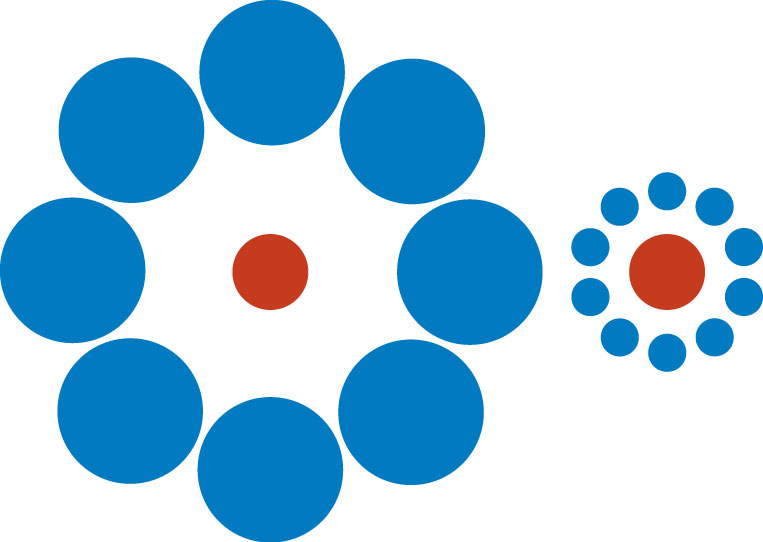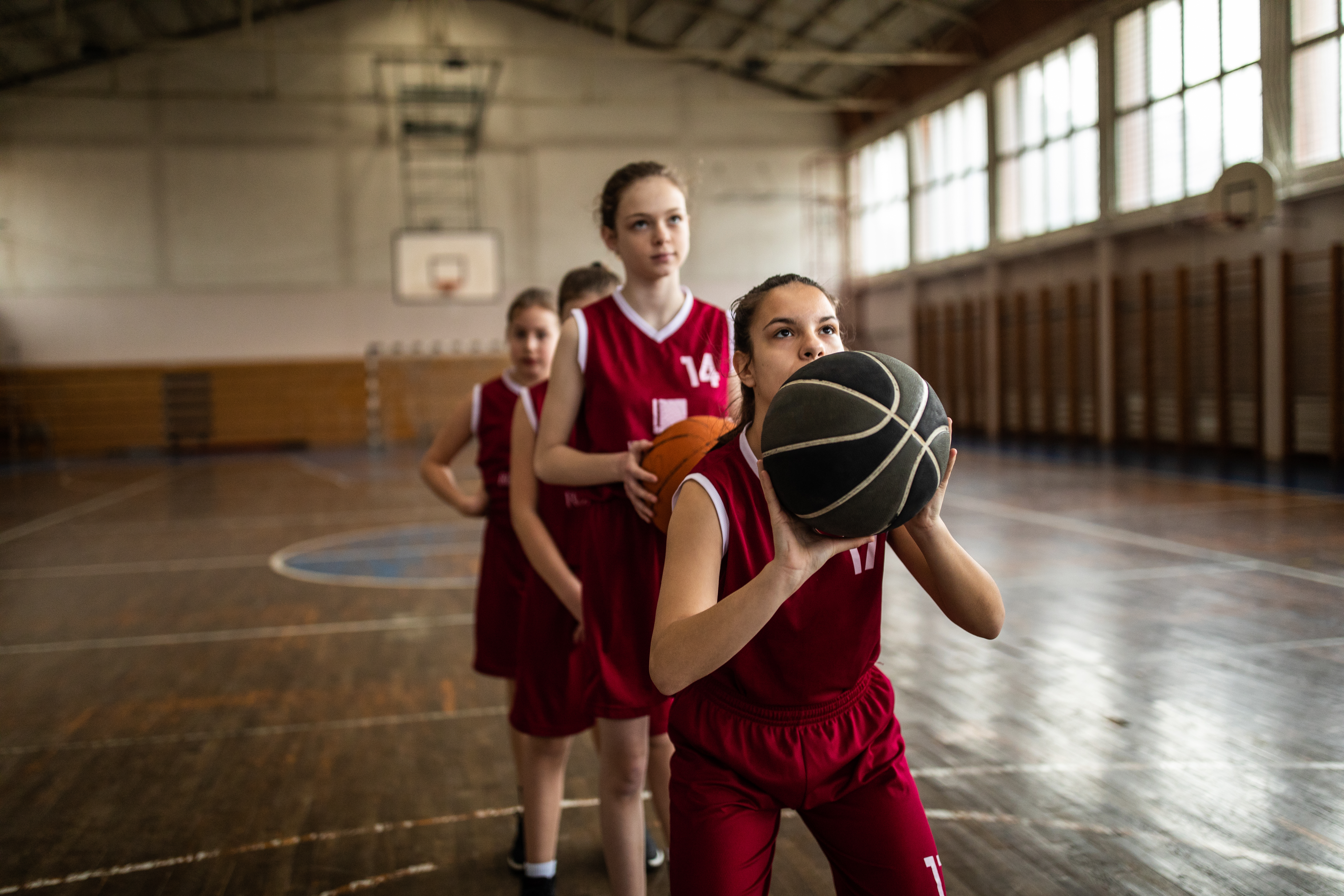Can a Visual Illusion Improve Sports Performance?
1.1 RESEARCH DESIGN: CAN A VISUAL ILLUSION IMPROVE SPORTS PERFORMANCE?1 of 9
Welcome
Can a Visual Illusion Improve Sports Performance?
Authors:
Kelly M. Goedert, Seton Hall University
Susan A. Nolan, Seton Hall University
Kaylise D. Algrim, Seton Hall University
Sports fans may be familiar with a phenomenon called quiet eye—when athletes stare directly at a point on their target without moving their eyes. Quiet eye is associated with greater success in a number of sporting activities, including free throws in basketball and putting in golf (Harle & Vickers, 2001). Jessi Witt and her fellow researchers (Witt, Linkenauger, & Proffitt, 2012) speculated that quiet eye may improve performance because focusing intently on a target may make the target appear bigger. The researchers hypothesized that if quiet eye works because it makes targets appear larger, so a visual illusion that makes targets appear bigger than their real size might also improve sports performance.

1.2 RESEARCH DESIGN: CAN A VISUAL ILLUSION IMPROVE SPORTS PERFORMANCE?2 of 9
In the study, 32 participants putted a golf ball to a 5-centimeter golf cup. Each participant attempted a total of 20 putts. The researchers wrote, “A downward-facing projector displayed a ring of 11 small (3.8 centimeters in diameter) or 5 large (28 centimeters) circles around each hole to create an Ebbinghaus illusion.” For each illusion, participants “attempted 10 putts from a distance of 3.5 meters, and we recorded how many putts dropped into the hole” (Witt et al., 2012, p. 397). The researchers hypothesized that participants would make more putts when the hole was surrounded by smaller circles (making the golf hole appear larger) than when it was surrounded by larger circles (making the golf hole appear smaller).
1.3 RESEARCH DESIGN: CAN A VISUAL ILLUSION IMPROVE SPORTS PERFORMANCE?3 of 9
Here is the description of the study again: In the study, 32 participants putted a golf ball to a 5-centimeter golf cup. Each participant attempted a total of 20 putts. The researchers wrote, “A downward-facing projector displayed a ring of 11 small (3.8 centimeters in diameter) or 5 large (28 centimeters) circles around each hole to create an Ebbinghaus illusion.” For each illusion, participants “attempted 10 putts from a distance of 3.5 meters, and we recorded how many putts dropped into the hole” (Witt et al., 2012, p. 397). The researchers hypothesized that participants would make more putts when the hole was surrounded by smaller circles (making the hole appear larger) than when it was surrounded by larger circles (making the hole appear smaller).
1.4 RESEARCH DESIGN: CAN A VISUAL ILLUSION IMPROVE SPORTS PERFORMANCE?4 of 9
Here is the description of the study again: In the study, 32 participants putted a golf ball to a 5-centimeter golf cup. Each participant attempted a total of 20 putts. The researchers wrote, “A downward-facing projector displayed a ring of 11 small (3.8 centimeters in diameter) or 5 large (28 centimeters) circles around each hole to create an Ebbinghaus illusion.” For each illusion, participants “attempted 10 putts from a distance of 3.5 meters, and we recorded how many putts dropped into the hole” (Witt et al., 2012, p. 397). The researchers hypothesized that participants would make more putts when the hole was surrounded by smaller circles (making the hole appear larger) than when it was surrounded by larger circles (making the hole appear smaller).
1.5 RESEARCH DESIGN: CAN A VISUAL ILLUSION IMPROVE SPORTS PERFORMANCE?5 of 9
1.6 RESEARCH DESIGN: CAN A VISUAL ILLUSION IMPROVE SPORTS PERFORMANCE?6 of 9
Here is the description of the study again: In the study, 32 participants putted a golf ball to a 5-centimeter golf cup. Each participant attempted a total of 20 putts. The researchers wrote, “A downward-facing projector displayed a ring of 11 small (3.8 centimeters in diameter) or 5 large (28 centimeters) circles around each hole to create an Ebbinghaus illusion.” For each illusion, participants “attempted 10 putts from a distance of 3.5 meters, and we recorded how many putts dropped into the hole” (Witt et al., 2012, p. 397). The researchers hypothesized that participants would make more putts when the hole was surrounded by smaller circles (making the hole appear larger) than when it was surrounded by larger circles (making the hole appear smaller).
1.7 RESEARCH DESIGN: CAN A VISUAL ILLUSION IMPROVE SPORTS PERFORMANCE?7 of 9
The researchers reported, “Participants made more successful putts when the 5-cm hole was perceptually larger” (Witt et al., 2012, p. 397). When putting to the hole surrounded by large circles, on average participants made 1.01 of their 10 putts, and when putting to the hole surrounded by smaller circles, on average participants made 1.75 of their 10 putts.
1.8 RESEARCH DESIGN: CAN A VISUAL ILLUSION IMPROVE SPORTS PERFORMANCE?8 of 9
Recall that the researchers hypothesized participants would make more putts when the hole was surrounded by smaller circles (making the hole appear larger) than when it was surrounded by larger circles (making the appear smaller). Again, the researchers reported that when putting to the hole surrounded by large circles, on average participants made 1.01 of their 10 putts and when putting to the hole surrounded by smaller circles, on average participants made 1.75 of their 10 putts.
1.9 RESEARCH DESIGN: CAN A VISUAL ILLUSION IMPROVE SPORTS PERFORMANCE?9 of 9
The bottom line: If you want to improve your performance at free throws, darts, or putting, then a quiet eye may help. The key is making your target appear larger than it actually is.

REFERENCES
Harle, S. K., & Vickers, J. (2001). Training quiet eye improves accuracy in the basketball free throw. Sport Psychologist, 15, 289–305. https://doi.org/10.1123/tsp.15.3.289
Witt, J. K., Linkenauger, S. A., & Proffitt, D. R. (2012). Get me out of this slump! Visual illusions improve sports performance. Psychological Science, 23, 397–399. https://doi.org/10.1177/0956797611428810